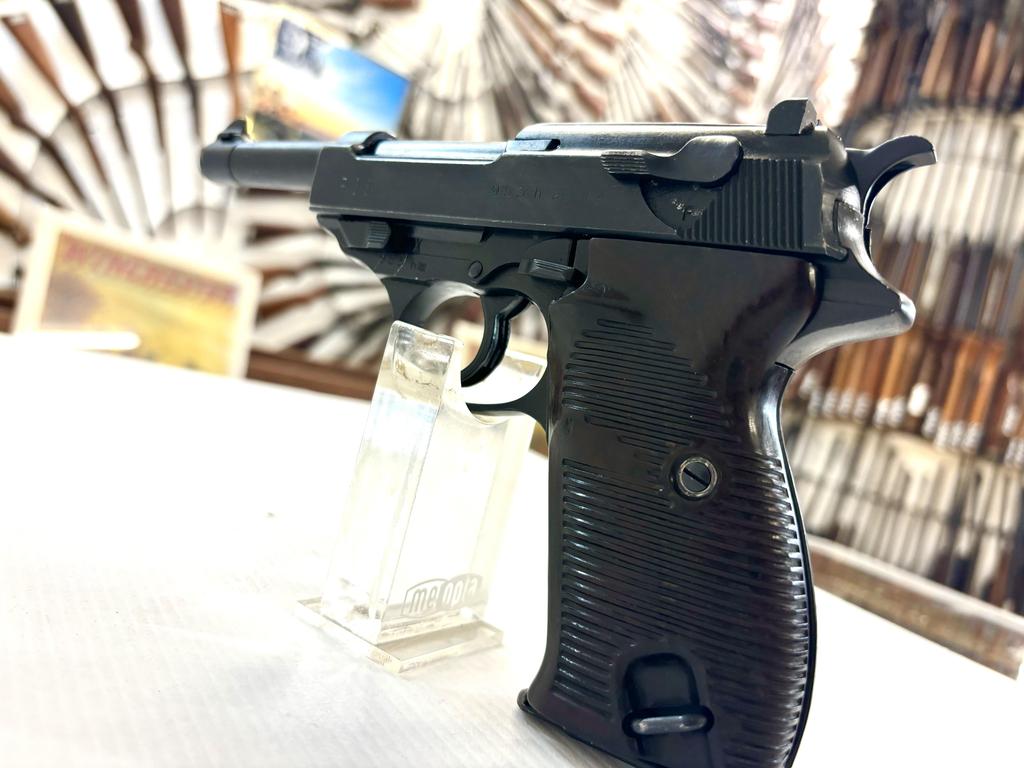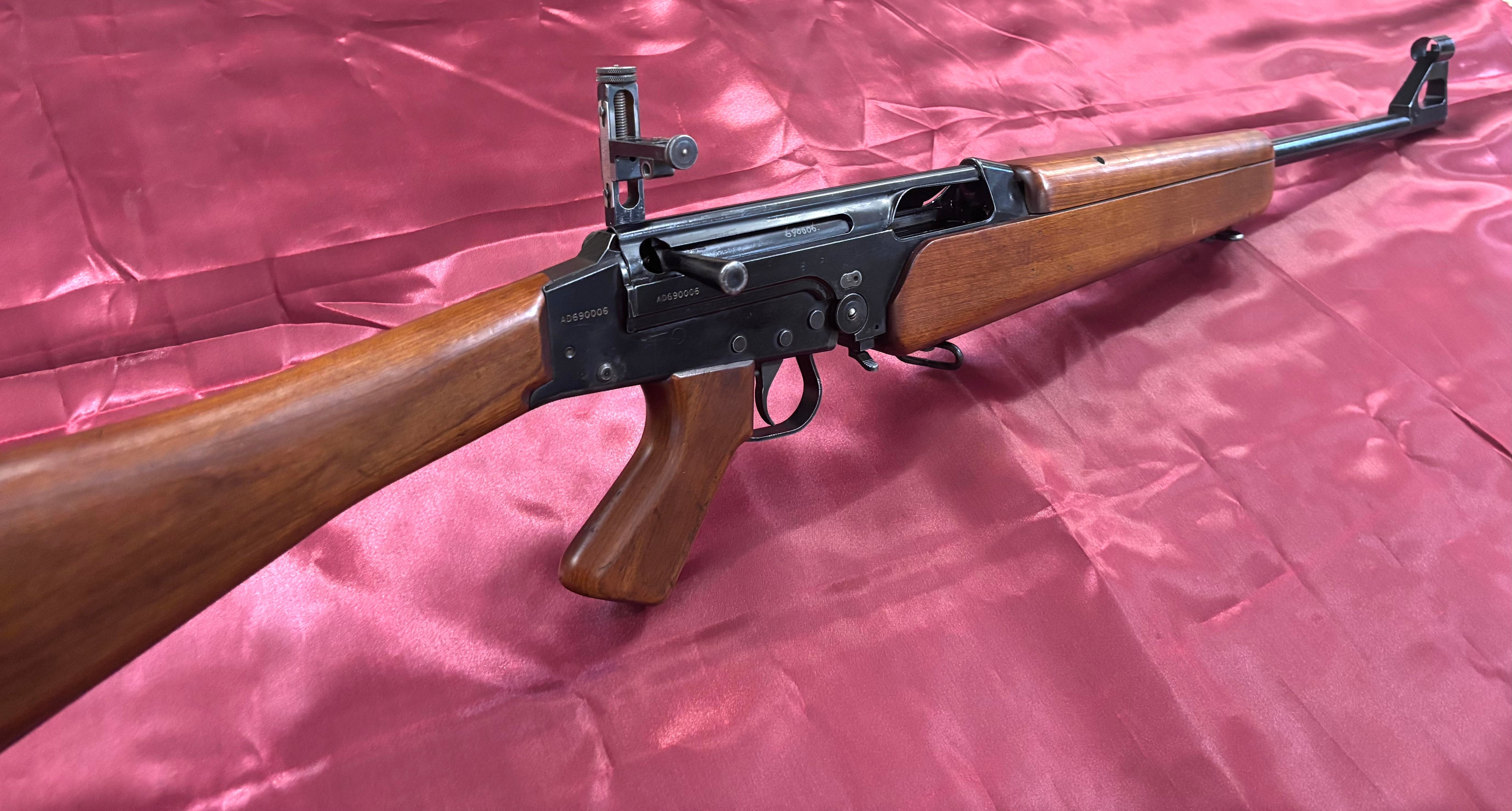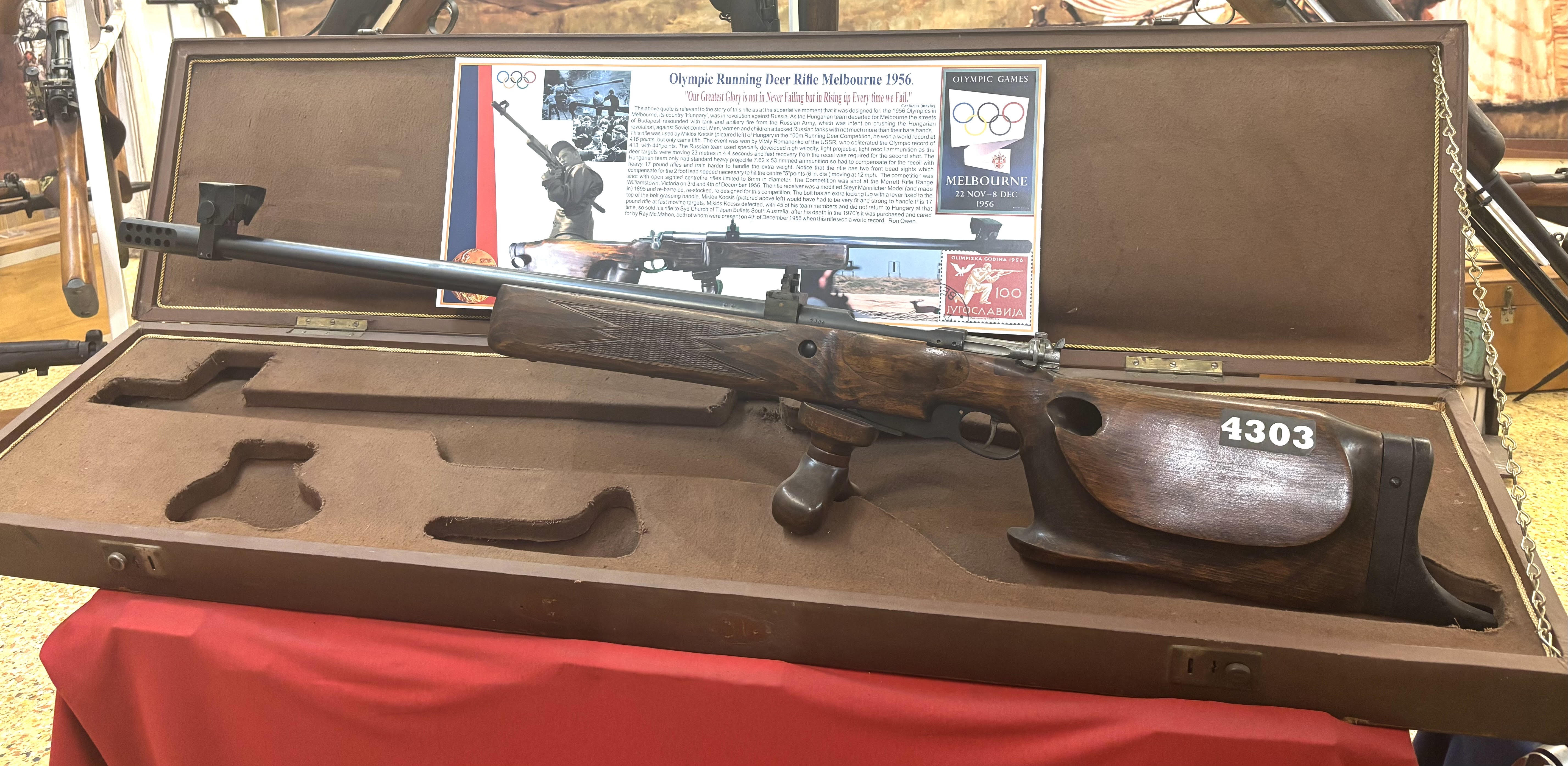
The P38

TYPE: Semi-Automatic Pistol
Origin: Nazi Germany
In Service: 1939 - Current Day (Select Countries)
Produced By: Carl Walther Waffenfabrik, Mauser Werke, Spreewerk
Amount Produced: 1,000,000+
Cartridge: 9x19MM
Rate Of Fire: 116 RPM

The Carl Walther Company began development of a new military pistol in the mid-1930s to replace the WW I Luger design. In 1938, the Werhmacht adopted Walther's design and called it the "Pistole 38." The pistol went into full production by mid-1940 and became standard issue in the World War II. Although never as famous as the Luger pistol, the P38 was issued to far more troops.

The P38 concept was accepted by the German military in 1938 but production of prototype ("Test") pistols did not begin until late 1939. Walther began manufacture at their plant in Zella-Mehlis and produced three series of "Test" pistols, designated by a "0" prefix to the serial number. The third series pistols solved the problems for the German Army and mass production began in mid-1940, using Walther's military production identification code "480"

The P38 was the first locked-breech pistol to use a double-action/single-action (DA/SA) trigger (the earlier double-action PPK was an unlocked blowback design, but the more powerful 9×19mm Parabellum round used in the P38 needed a locked breech design). The shooter could chamber a round, use the safety-decocking lever to lower the hammer without firing the round, and carry the weapon with a round chambered. The lever can stay on "safe", or if returned to "fire", the weapon remains safely "ready" with a long, double-action trigger pull for the first shot. Pulling the trigger cocks the hammer before firing the first shot with double-action operation. The firing mechanism extracts and ejects the first spent round, cocks the hammer, and chambers a fresh round for single-action operation with each subsequent shot; all features found in many modern handguns. Besides a DA/SA trigger design similar to that of the earlier Walther PPKs the P38 features a visible and tactile loaded chamber indicator in the form of a metal rod that protrudes from the rear of the slide when a round is chambered. During WWII, the P.38 was produced by Walther, Mauser, and Spreewerk. To conceal manufacturer identities, each wartime manufacturer used a letter code: ac (Walther); byf (Mauser), and cyq (Spreewerk), followed by the date (e.g.: ac44: Walther 1944 production). Spreewerk did not mark production dates. Pistols were produced in blocks of 10,000 consecutively numbered pistols, with each block having a consecutive letter suffix, to conceal production volume. 1,277,680 P.38s were produced during WWII: 617,585 by Walther in Zella-Mehlis; 372,875 by Mauser in Oberndorf; 287,220 by Spreewerk Grottau.Late in the war,the Spreewerk (cyq) die broke. Subsequent pistols appear to be marked "cvq" due to the broken die. About 31,400 pistols are so marked. Spreewerk production ended April 1945.

The P38 was used in the following armed conflicts
- World War II
- Indochina War
- Algerian War
- Portuguese Colonial War
- Vietnam War
- The Troubles
- 1958 Lebanon Crisis
- Lebanese War
- War In Afghanistan
- Iraqi Civil War













